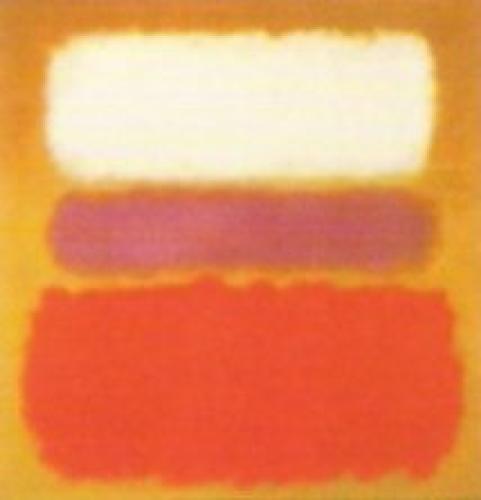This painting is part of Mark Rothko's multiform series that signifies his transition into an abstract art style. This painting features rich colors on a large canvas. It displays sharp vivid images with a high level of accuracy. The painting is quite simple. It features a brown background and a white cloud represented as a colored rectangular square. Beneath the white cloud is a purple-colored rectangle and a red one under it. The rectangular forms float gently on the canvas hence the term cloud.
Mark Rothko was constantly searching for a way to express profound emotions through paintings. He made painting like White Cloud over Purple as a way to do this. He used richly-colored squares in his compositions to evoke what he referred to as the sublime. In simpler terms, he sought to evoke the metaphysical in his works. In a unique way, he expressed a desire to express fundamental human emotions, like tragedy, doom, and ecstasy, through his paintings. In this particular piece, he sought to evoke viewers' emotions through his meticulous brushstrokes, shapes, and color composition. He also used thin washes of paint oil to achieve maximum luminosity in his works. This is typical in most abstract art or modernism.
The artist made several other pieces in the same abstract style. For instance, in the late 1950s, he made a series of untitled paintings in the same styles. Each of the paintings features floating rectangular forms with vivid colors. Among these paintings are the Untitled (Violet, Black, Orange, Yellow, and White), Untitled (Red, Black, White on Yellow), and the White and Green in Blue painting. He also made several other similar pieces, which, according to art critics, only differed in color. However, his unique color field paintings with glowing colors became an iconic signature.
It is worth mentioning that Mark Rothko used colors to name his paintings because he did not want to limit his viewers to particular thought patterns. He wanted viewers to be free to interpret his pieces as they wanted. This is the reason why he opted to leave his later paintings untitled. The current location or owner of the original White Cloud over Purple is unknown. However, there are several imitations of the painting made by other incredible artists.

